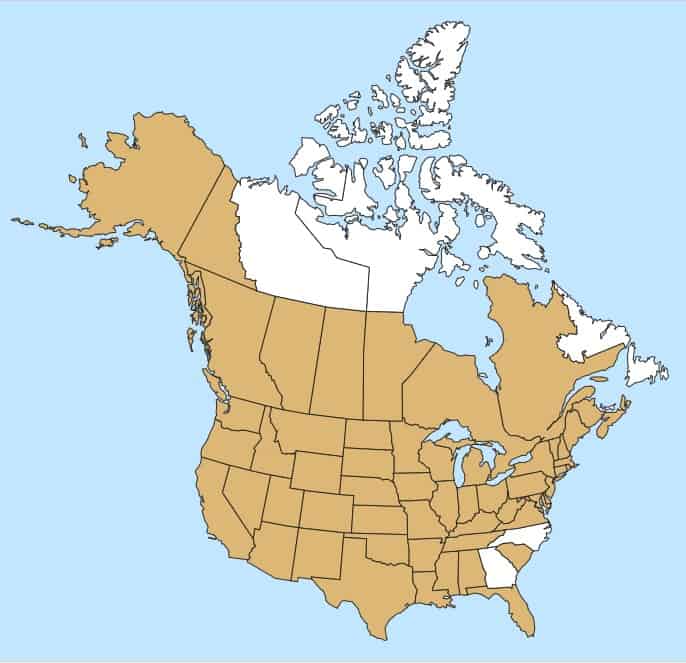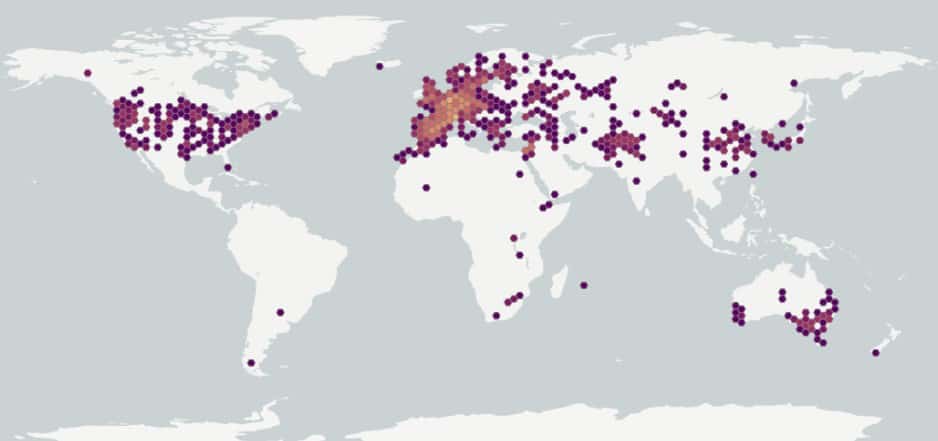Gypsophila vaccaria
Overview
Aperçu
Regulation :
Remarques Réglementation:
- CFIA Weed Seeds Order - Class 3: Secondary Noxious Weed Seeds
- Quarantine lists of countries e.g. Mexico *may be updated without notice
Regulation Notes:
Distribution :
Répartition :
Native to northern Africa, Europe and temperate Asia (USDA-ARS 2021). Introduced in North America, southern South America (e.g., Argentina and Uruguay), Africa (Eritrea, Ethiopia, South Africa, Mauritius, and Reunion), Australia, and Asia (e.g., Arabian Peninsula, Japan, Thailand) (USDA-ARS 2021; USDA-NRCS 2021). Occurs across Canada except for Newfoundland, Prince Edward Island, Northwest Territories and Nunavut (Brouillet et al. 2010+).
Habitat and Crop Association :
Habitat et Cultures Associées :
Cultivated fields, old fields, roadsides, railway lines and disturbed areas (Darbyshire 2003).
Economic Use, cultivation area, and Weed Association :
Utilisation économique, zone de culture et association de mauvaises herbes :
Duration of Life Cycle :
Durée du cycle vital:
Annual
Dispersal Unit Type :
Type d’unité de dispersion :
Seed
General Information
RENSEIGNEMENTS GÉNÉRAUX
Gypsophila vaccaria prefers fine-textured soils in cultivated land and waste places (Mazza et al. 1992; Frankton and Mulligan 1993). It was a common weed of Canadian and northern United States grain crops in the past, but the species has been declining over the last few decades (FNA 1993+; Duddu and Shirtliffe 2014). The saponins contained in the plants and seeds are potentially toxic to livestock if ingested (Frankton and Mulligan 1993), but are a desired chemical for medicinal and cosmetic applications (Mazza et al. 1992; Duddu and Shirtliffe 2014).
.Identification
Identification
-
Capsule
Size
- Capsule length: 9.0 – 17.0 mm (FNA 1993+)
Shape
- Capsule is egg-shaped
Surface Texture
- Surface is smooth with five longitudinal ridges
Colour
- Capsule is dull or shiny straw yellow coloured
Other Features
- Capsule is shiny green when immature
- Capsule disperses the seeds from the narrow end, opening by tooth-like valves
-
Seed
Size
- Seed length*: 1.6 – 2.4 mm; width: 1.5 – 2.2 mm
*Note: minimum and maximum of 20 seeds in a normal range of this species using image measurement (ISMA 2020)
Shape
- Seed is globose shaped with a flat strip around the middle
Surface Texture
- Surface with papillate tubercles arranged in rows
Colour
- Mature seeds are dull black coloured
- Immature seeds are reddish-brown coloured
Other Features
Hilum and Hilum area
- Hilum a small opening on flattened edge
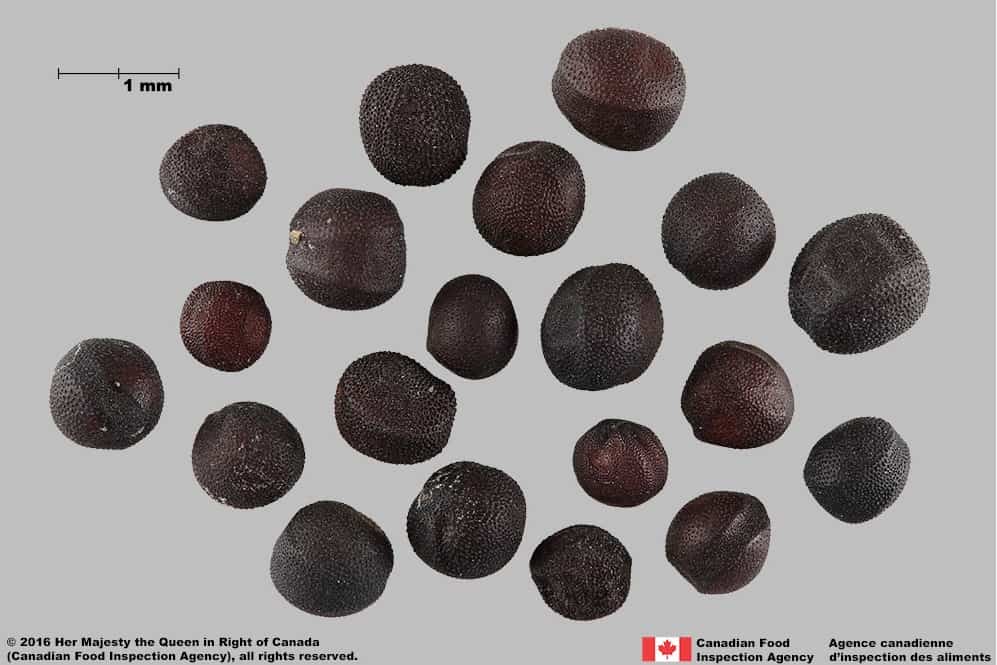
Gypsophila vaccaria (cow cockle) seeds

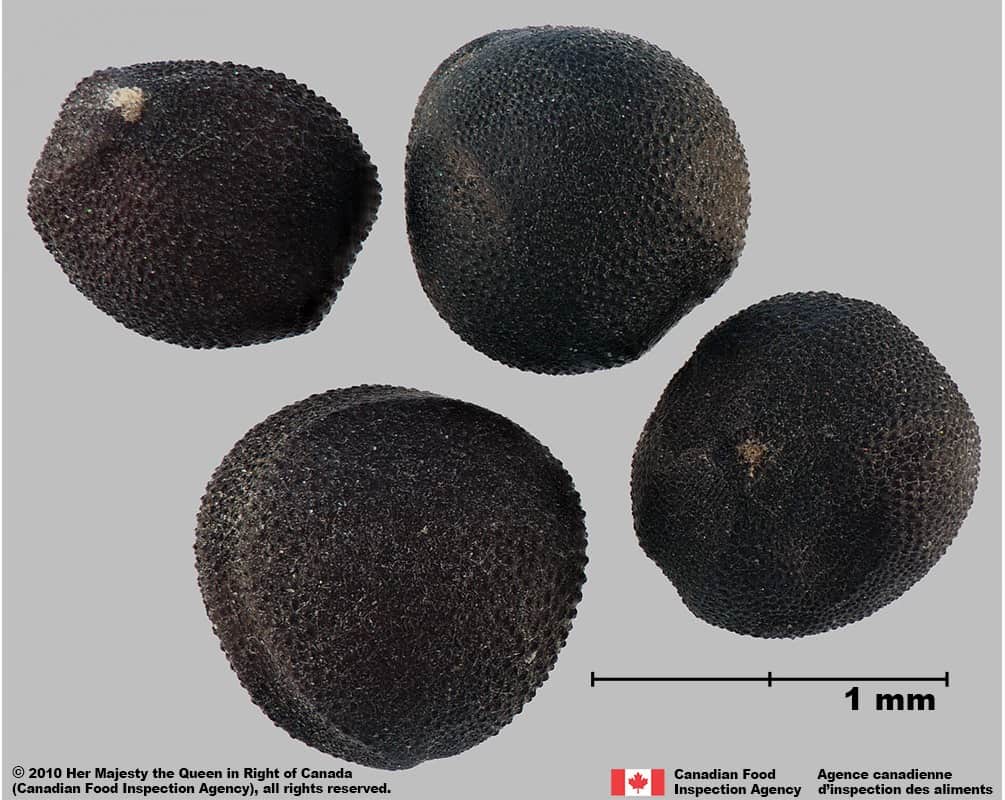
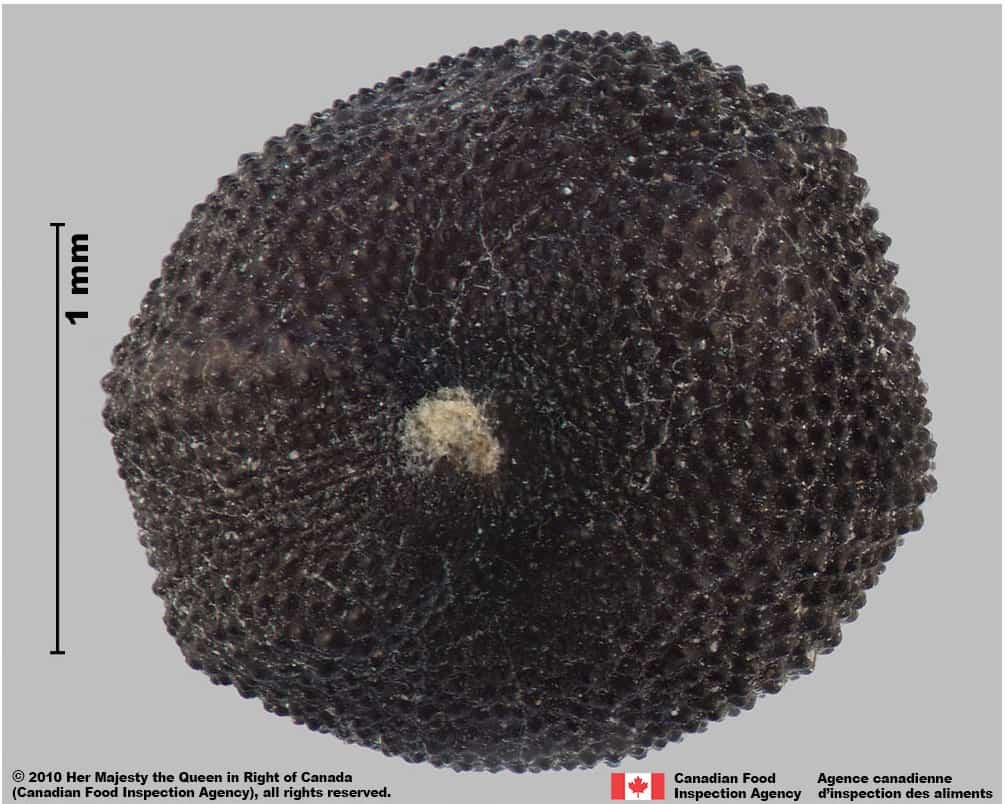
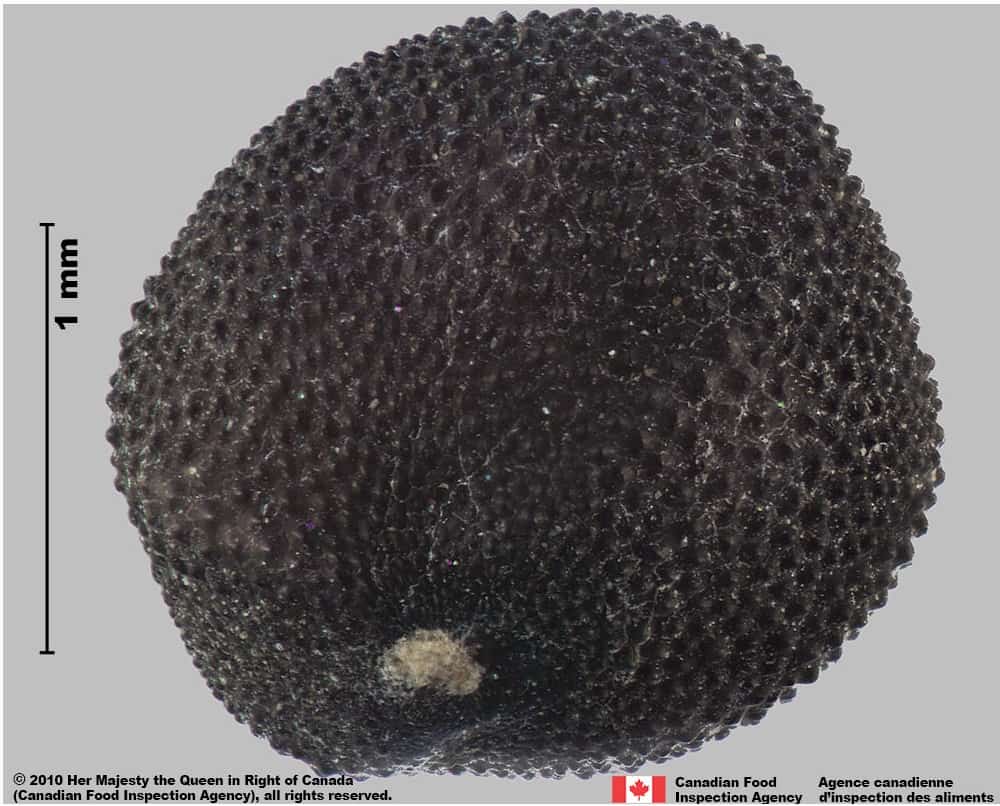
-
Embryo
Size
- Embryo partially fills the seed
Shape
- Embryo is curved, in a peripheral position
Endosperm
- Endosperm is white coloured
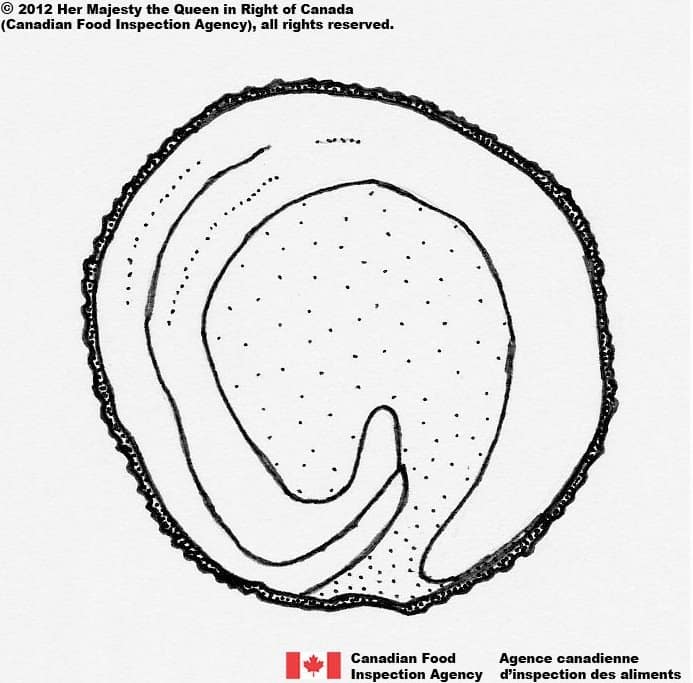
Gypsophila vaccaria (cow cockle) seed, cross-section

Identification Tips
CONSEILS POUR L’IDENTIFICATION
Seeds of Gypsophila vaccaria appear similar to other species with round, black coloured seeds such as Saponaria officinalis, Gyposphila species and Sinapis arvensis. The inflated, globose shape of G. vaccaria seeds can be distinguished from Saponaria species and other Gypsophila species, which are compressed in edge view. G. vaccaria seeds are papillate tuberculate textured, the seeds of Saponaria officinalis are grooved reticulate, other Gypsophila species are warty tuberculate and Sinapis arvensis seeds are ridged reticulate textured.

Gypsophila vaccaria (cow cockle) seed, hilum view




Additional Botany Information
AUTRES RENSEIGNEMENTS BOTANIQUES
Similar Species
ESPÈCES SEMBLABLES
Similar species are based on a study of seed morphology of various species, and those with similar dispersal units are identified. The study is limited by physical specimen and literature availability at the time of examination, and possibly impacted by the subjectivity of the authors based on their knowledge and experience. Providing similar species information for seed identification is to make users aware of similarities that could possibly result in misidentification.
Saponaria officinalis L.
S. officinalis seeds are generally smaller (length*: 1.5 – 2.0 mm; width: 1.3-1.8 mm), shiny dark reddish coloured, compressed in edge view, the hilum is in a notch, and the surface pattern is grooved reticulate with convex interspaces rather than tuberculate as G. vaccaria seeds.
*Note: minimum and maximum of 20 seeds in a normal range of this species using image measurement (ISMA 2020)
Click to select species
Cliquez pour sélectionner les espèces
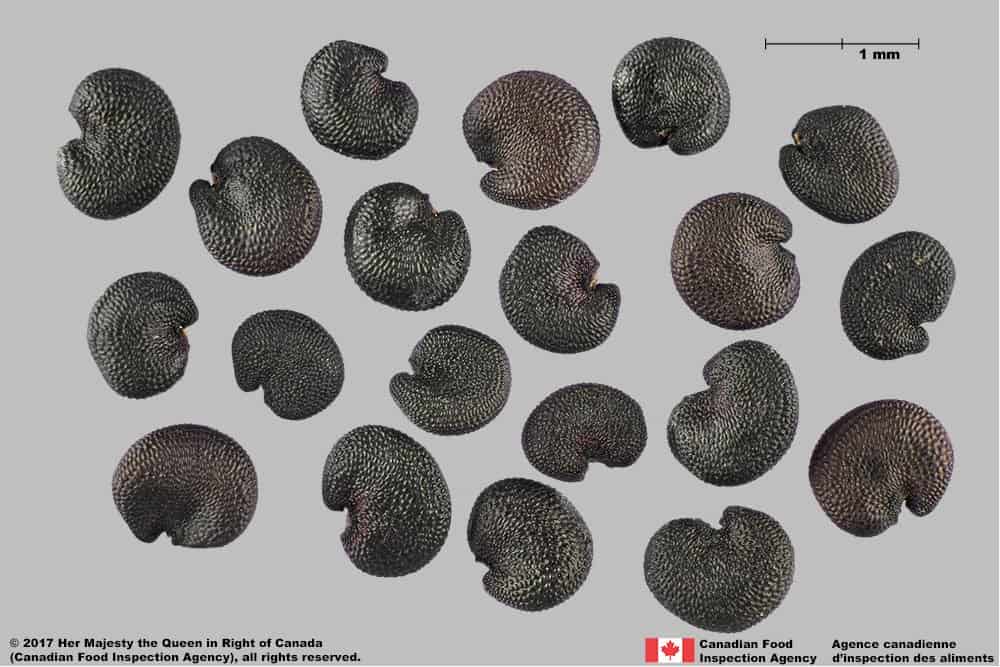
Saponaria officinalis
Comparison Window
Fenêtre de comparaison
MAIN SPECIES
ESPÈCES PRINCIPALES
Gypsophila vaccaria

Gypsophila vaccaria
Caryophyllaceae
Gypsophila vaccaria (cow cockle) seeds
MAIN SPECIES
ESPÈCES PRINCIPALES
Gypsophila vaccaria

Gypsophila vaccaria
Caryophyllaceae
Gypsophila vaccaria (cow cockle) seeds
MAIN SPECIES
ESPÈCES PRINCIPALES
Gypsophila vaccaria

Gypsophila vaccaria
Caryophyllaceae
Gypsophila vaccaria (cow cockle) seed, hilum view
MAIN SPECIES
ESPÈCES PRINCIPALES
Gypsophila vaccaria

Gypsophila vaccaria
Caryophyllaceae
Gypsophila vaccaria (cow cockle) seed, hilum view
MAIN SPECIES
ESPÈCES PRINCIPALES
Gypsophila vaccaria

Gypsophila vaccaria
Caryophyllaceae
Gypsophila vaccaria (cow cockle) seed, cross-section
SIMILAR SPECIES
ESPÈCES SEMBLABLES
Saponaria officinalis

Saponaria officinalis
Caryophyllaceae
Bouncingbet (Saponaria officinalis) seeds
SIMILAR SPECIES
ESPÈCES SEMBLABLES
Saponaria officinalis
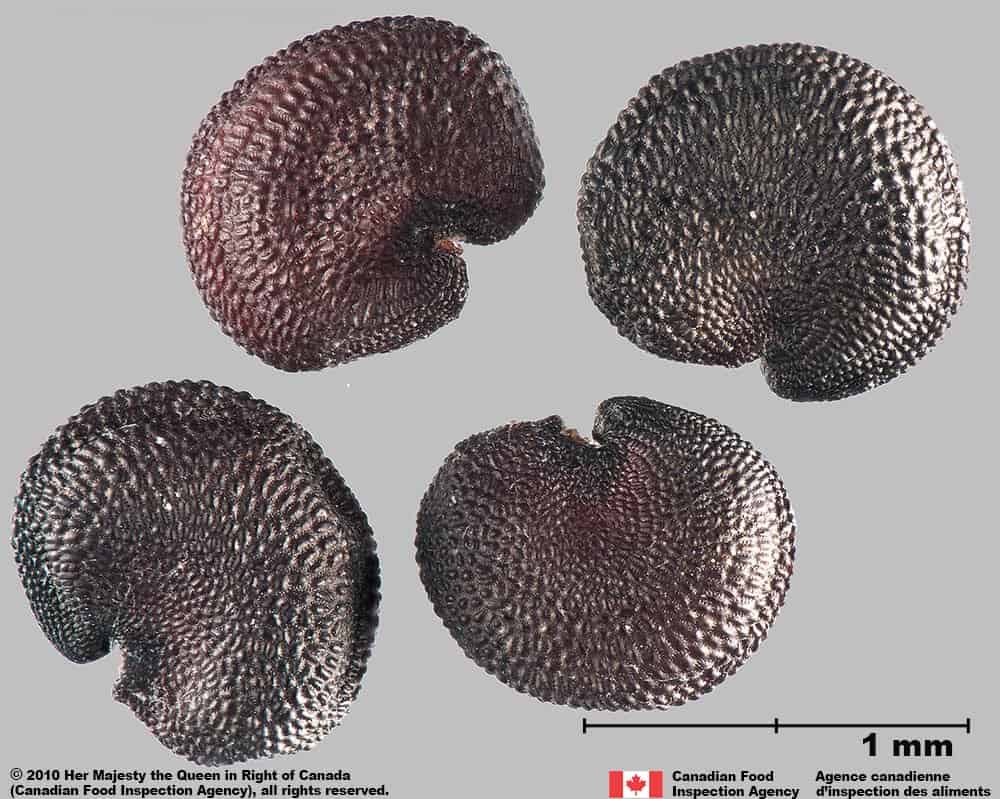
Saponaria officinalis
Caryophyllaceae
Bouncingbet (Saponaria officinalis) seeds
SIMILAR SPECIES
ESPÈCES SEMBLABLES
Saponaria officinalis
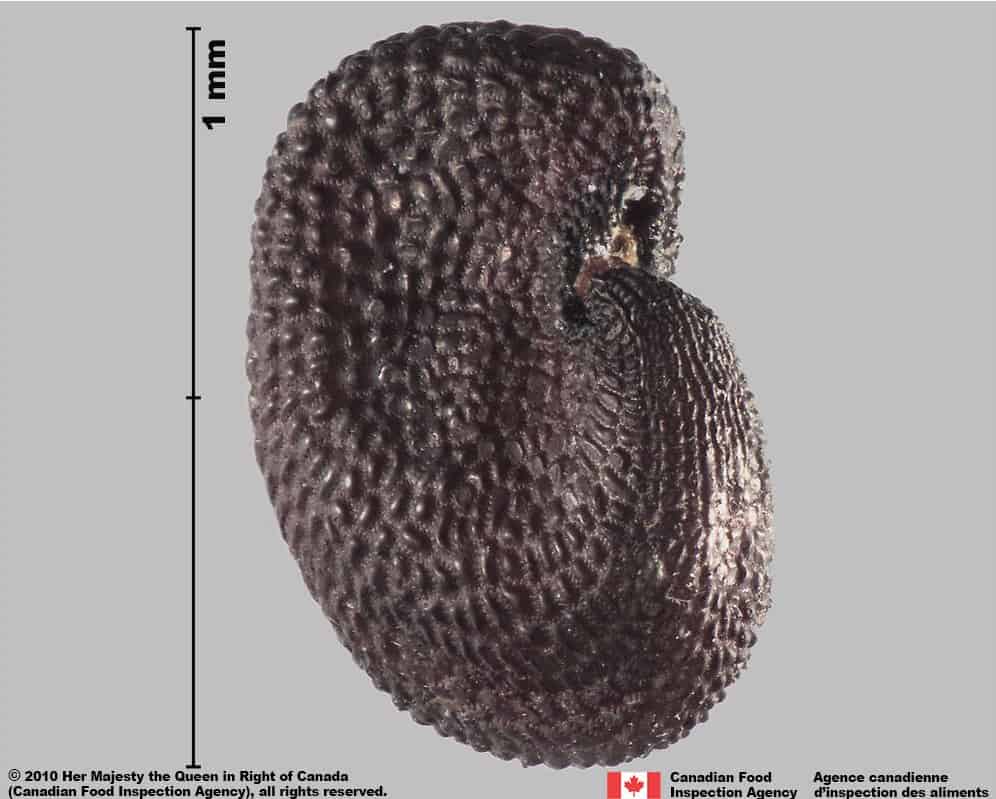
Saponaria officinalis
Caryophyllaceae
Bouncingbet (Saponaria officinalis) seed, hilum view
SIMILAR SPECIES
ESPÈCES SEMBLABLES
Saponaria officinalis
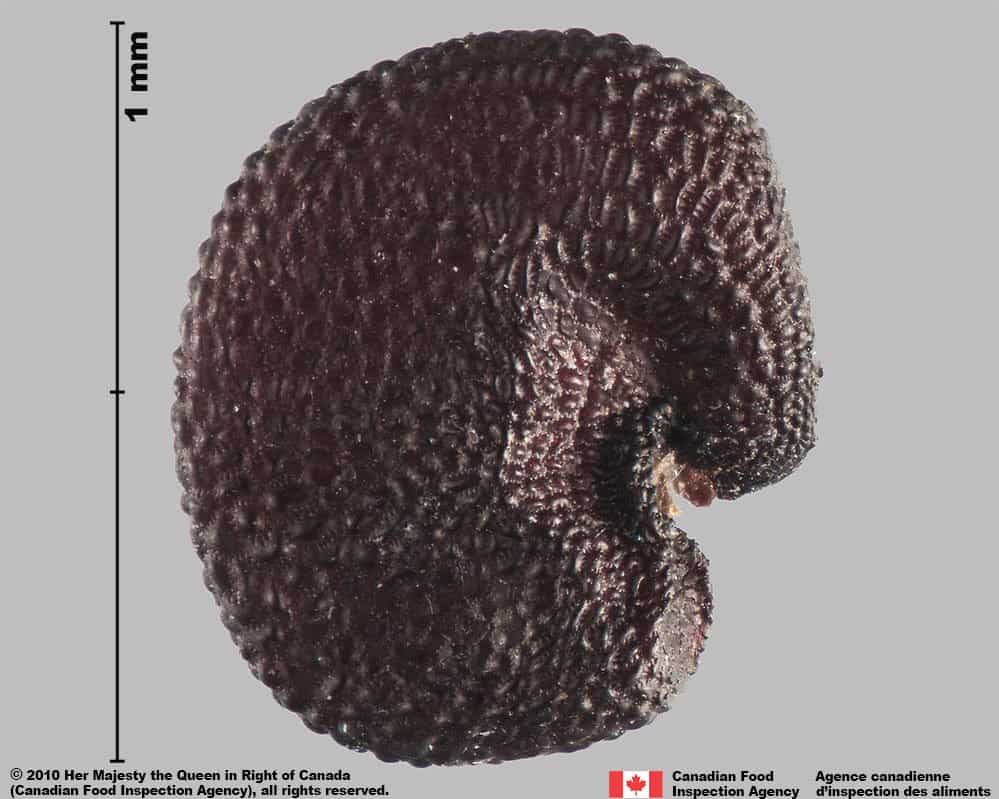
Saponaria officinalis
Caryophyllaceae
Bouncingbet (Saponaria officinalis) seed
SIMILAR SPECIES
ESPÈCES SEMBLABLES
Saponaria officinalis
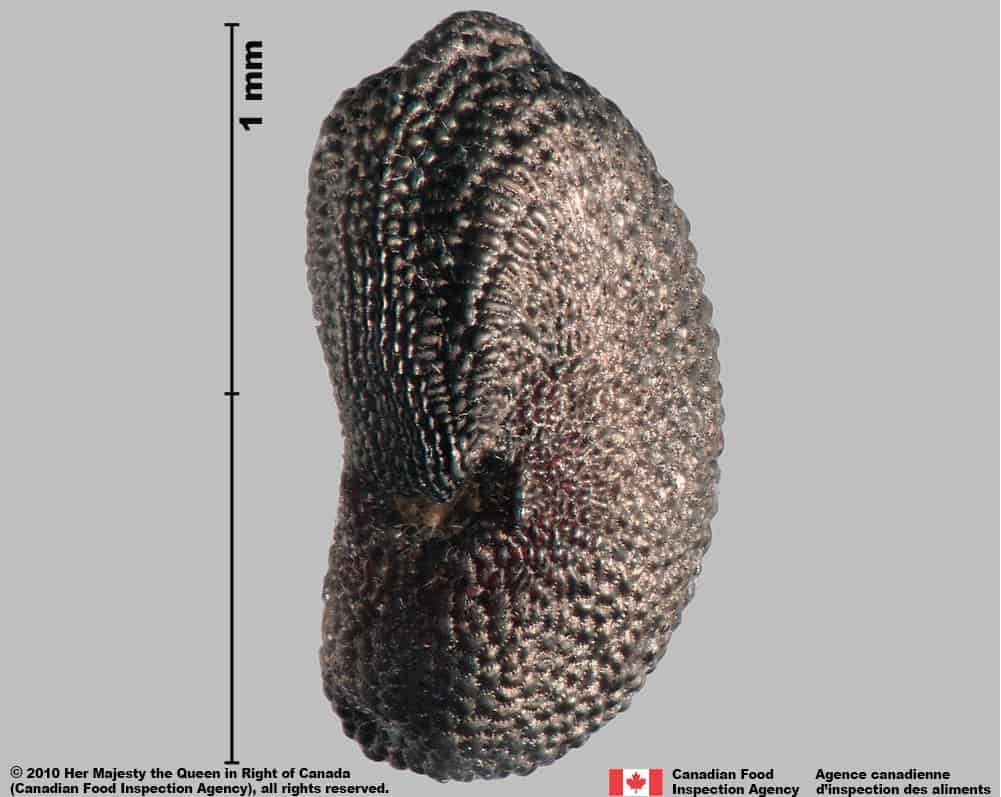
Saponaria officinalis
Caryophyllaceae
Bouncingbet (Saponaria officinalis) seed, hilum view
Need ID Help?
Besoin d’aide pour l’identification?
Reference(s)
Référence(s)
Brouillet, L., Coursol, F., Meades, S. J., Favreau, M., Anions, M., Bélisle, P. and Desmet, P. 2010+. VASCAN, the database of vascular plants of Canada. http://data.canadensys.net/vascan/ Accessed April 29, 2021.
Centre for Agriculture and Bioscience International (CABI). 2021. Invasive Species Compendium, CAB International, Wallingford, UK. https://www.cabidigitallibrary.org/journal/cabicompendium Accessed April 29, 2021.
Darbyshire, S. J. 2003. Inventory of Canadian Agricultural Weeds. Agriculture and Agri-Food Canada, Research Branch. Ottawa, ON.
Duddu, H.S.H. and Shirtliffe, S. J. 2014. Variation of Seed Dormancy and Germination Ecology of Cowcockle (Vaccaria hispanica). Weed Science 62: 483 – 492.
FNA. 1993+. Flora of North America North of Mexico. 19+ vols. Flora of North America Editorial Committee, eds. New York and Oxford, http://floranorthamerica.org/Main_Page
Frankton, C. and Mulligan, G. A. 1993. Weeds of Canada. Agriculture Canada, Publication 948.
Government of Canada (GC). 2016. Canadian Weed Seeds Order. https://laws-lois.justice.gc.ca/eng/regulations/SOR-2016-93/page-2.html (English) https://laws-lois.justice.gc.ca/fra/reglements/DORS-2016-93/page-2.html (French)
International Seed Morphology Association (ISMA). 2020. Method for Seed Size Measurement. Version 1.0. ISMA Publication Guide.
Mazza, G., Biliaderis, C.G., Przybylski, R., and Oomah, B.D. 1992. Compositional and Morphological Characteristics of Cow Cockle (Saponaria vaccaria) Seed, a Potential Alternative Crop. Journal of Agricultural and Food Chemistry 40: 1520-1523.
U.S. Department of Agriculture-Agricultural Research Services (USDA-ARS). 2021. Germplasm Resources Information Network (GRIN), https://npgsweb.ars-grin.gov/gringlobal/taxon/taxonomysimple.aspx Accessed April 29, 2021.
U.S. Department of Agriculture-Natural Resources Conservation Service (USDA-NRCS). 2021. The PLANTS Database. National Plant Data Team, Greensboro, NC USA. http://plants.usda.gov Accessed April 29, 2021.



